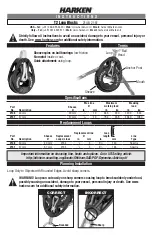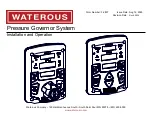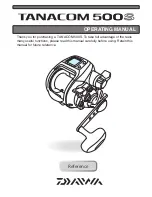
19
Operating the Probe
Using the accessories
N O T E
Each lead has an input capacitance of approximately 15 pF. This capacitance may limit
the bandwidth of your measurement (depending on the impedance of the circuit). Also,
CMRR may be affected because of slight differences between the input capacitance of
the two leads. CMRR is also affected by differences in impedance between the two
measurement points.
Adapters
There are three adapters for use with the differential probe. Two adapters are
attenuators, a 10:1 and a 100:1. The other is an ac adapter for blocking dc from the probe
input.
The adapters are installed on the probe after the probe tip caps and probe tips have been
removed. The adapter fastens to the probe using a thumbwheel located on the underside
of the adapter. The figure below shows a good way to hold the probe while attaching the
adapter.
1
Remove the probe tip caps and probe tips from the probe.
2
Fit the adapter over the end of the probe and rotate the thumbwheel with your
finger until the adapter fits snugly.
A snug fit is important because the ground is maintained through the thumbwheel screw.
A loosely attached adapter compromises the mechanical and electrical integrity of the
combination.
Figure 2-2
Attaching the adapters
Содержание 1153A
Страница 4: ...5 1 General Information ...
Страница 12: ...13 General Information General Characteristics Figure 1 3 1153A Differential Probe Dimensions ...
Страница 13: ...15 2 Operating the Probe ...
Страница 23: ...25 3 Service ...
Страница 34: ...36 Service Replaceable Parts Figure 3 7 1153A Differential Probe Parts ...
















































